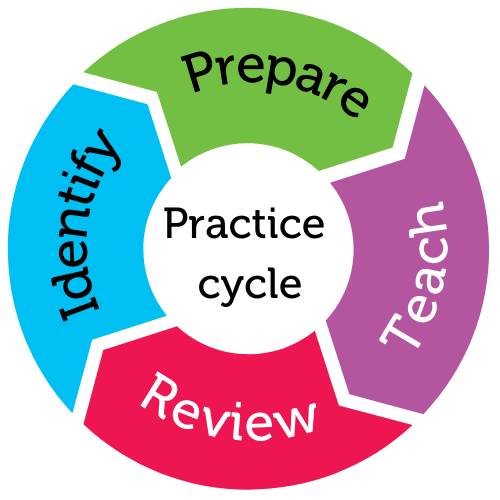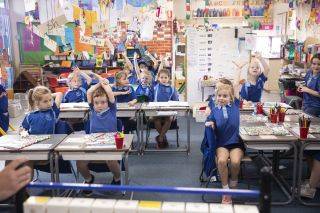
For student year
Helps students to
- feel connected
- feel valued
Helps teachers to
- build positive student relationships
- build emotional trust
- establish a safe environment
Summary
For the primary school version of this practice, go to:
Strengthen school belonging and emotional trust (Foundation to year 6).
Student belonging is when students feel they fit in, are valued, liked and respected in the classroom. Feeling a sense of belonging is important for all students to achieve their potential in regard to behaviour and academic work.
When students feel as though they belong and are a part of something, they’re more likely to display positive behaviour and remain engaged and on-task. Teachers strengthen a sense of school belonging and emotional trust by building rapport with students through a variety of strategies, such as engaging with their interests.
Getting to know your students on an academic and personal basis is important at all year levels. However, due to the nature of secondary school timetables, you may see some students only once or twice a week. Despite this, making the effort to recall names, show an interest, and share information about yourself fosters connection and a sense of belonging to the class and the school community.
Strengthening belonging in this way is especially helpful for year 7 students who are new to the school and the secondary school system. Students on the autism spectrum will also benefit from you getting to know them and their preferences.
“When students feel they belong and are part of something, they’re more likely to display positive behaviour and remain engaged and on task.”
How the practice works
Watch this video to learn more about this practice.
Duration: 3:25
Australian Professional Standards for Teachers related to this practice
1.1 - physical, social and intellectual development and characteristics of students
4.1 - support student participation
4.3 - manage challenging behaviour
For further information, see Australian Professional Standards for Teachers AITSL page
Preparing to teach
At the beginning of the year, choose your own personal catalogue of ‘school belonging’ behaviours and strategies to get to know and build rapport and trust with your students. Choose behaviours that suit your personal style to ensure you deliver them authentically. Also provide scaffolds and model behaviour that promotes rapport building between your students.
Some ideas include:
- greet students by name as they enter class
- ask about students’ general well-being
- get to know about students’ strengths, interests and goals
- be available to students by arriving at class a few minutes before it commences
- spend time outside the staff room, making opportunities to run into students
- let students get to know a little about you personally by sharing some personal interests
- use humour to build rapport
- be positive and encouraging of students
- encourage students to share some of their own personal experiences with each other to promote belonging within a whole class context
- recognise the contributions all students make to the classroom.
You can learn more about ways to facilitate school belonging (also known as school connectedness) by visiting the inclusionED practice Foster school connectedness using the WISE model.
It works better if the teacher:
- gets to know their students and individual interests
- establishes these habits from the beginning of the school year
- shares a bit about themselves and their interests
- demonstrates a positive attitude towards their students.
It doesn’t work if the teacher:
- demonstrates favouritism
- is negative or puts students down
- stereotypes groups of students.
In the classroom
How do I do it?
- Implement your chosen strategy/s.
- Regularly check in with students to ensure they feel like a valued member of the class.
- Observe students for increased engagement with the class.
- Monitor and check for a decrease in off-task behaviour.
Practice toolkit
Practice implementation planner template
We know it's not always easy to keep track of what's working and what isn't. So, we've created this template for you to record and reflect on what you're doing to create more inclusive classrooms. The implementation planner contains:
- guidance around goal setting
- a reflection section (what worked, didn’t work, what to change, and next steps)
- prompting questions.
Implementation planner with examples
Set your professional learning goal for:
Strengthen school belonging and emotional trust (Secondary)
Benefits of goal setting
Setting, working towards, and reflecting on goals helps you grow professionally and improve your practice. You can access AITSL learning resources for teachers to learn more about:How to set goals
The Australian Institute for Teaching and School Leadership recommends using the SMART matrix to frame your goal setting.SMART goals refers to goals that are:
- Specific
- Measurable
- Achievable
- Relevant
- Time-phased
Resources
Related Practices

Foster school connectedness using the WISE model
TEACHING PRACTICE
For student years
Helps students to
- increase self-esteem
- improve resilience
- increase school connectedness

Strengthen school belonging and emotional trust
TEACHING PRACTICE
For student years
Helps students to
- feel connected
- feel valued
This practice is from the core research project
Learning Cycle

